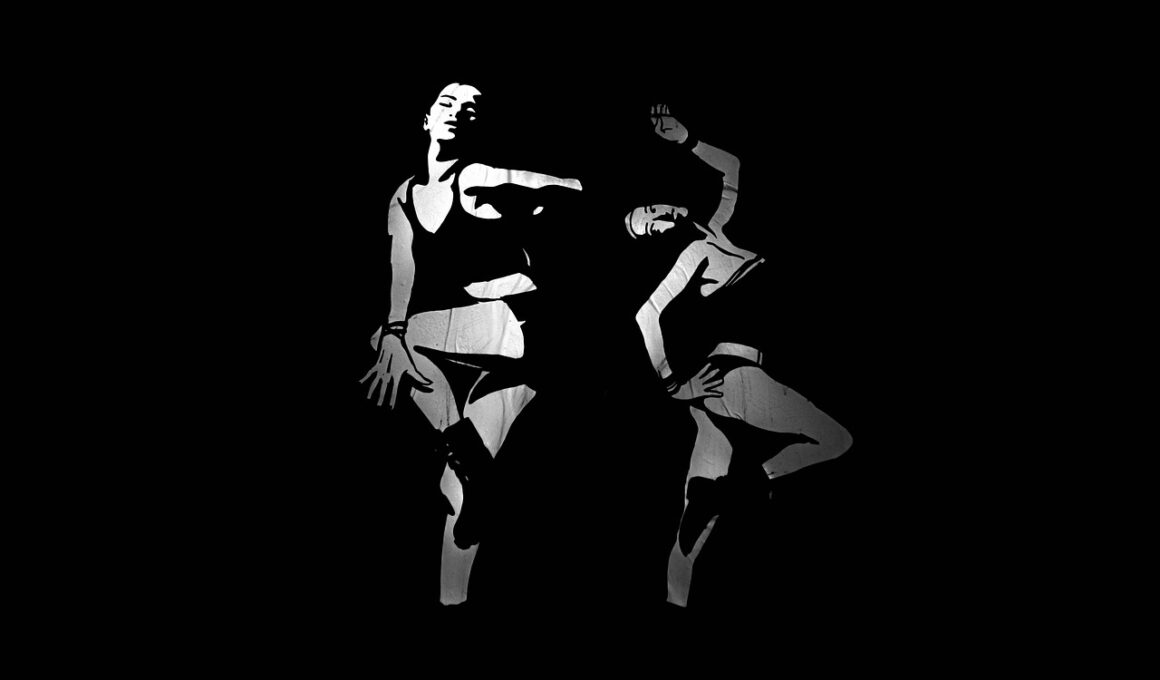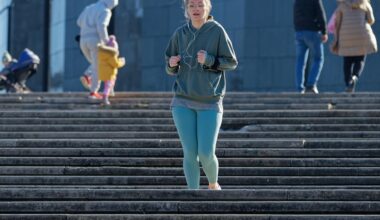Adapting Dance Fitness for Different Body Types and Abilities
Dance fitness programs offer a refreshing approach for women looking to stay fit while enjoying themselves. However, it is essential to recognize that every individual is unique, with varying body types and capabilities. Adapting dance fitness routines helps accommodate these differences, ensuring that each participant can engage meaningfully. First, instructors can modify movements to suit various levels of agility, strength, and flexibility. For example, incorporating low-impact versions of dance steps allows those with joint concerns to participate without feeling discomfort. Furthermore, choreography can involve simpler patterns that gradually build complexity. This approach not only empowers participants but also fosters a welcoming environment.
Additionally, creating a diverse dance fitness program encourages inclusivity among all body shapes. For instance, utilizing props like scarves or resistance bands can enhance routines, making them adaptable for various fitness levels. Participants can engage in moves that feel comfortable for them and gradually progress as their fitness improves. Another vital aspect involves recognizing and respecting individual comfort zones. Some dancers may prefer smaller group settings or more personalized attention. Offering modifications during sessions not only showcases flexibility but also promotes a sense of belonging. Ultimately, a supportive atmosphere enhances overall motivation and satisfaction.
Moreover, understanding the psychological aspects of dance fitness is crucial. Many might feel self-conscious about their bodies, leading to reluctance in participating. By focusing on body positivity, instructors can guide women toward loving their bodies while engaging in dance fitness. Classes tailored to celebrate diversity through music and movement empower participants to see their bodies as instruments of expression. Educating users about various dance styles and their origins fosters appreciation for cultural movements. Dance programs that encompass a variety of backgrounds and traditions can build confidence and make every participant feel seen.
Creating a Customized Dance Routine
To ensure that dance fitness resonates with every participant, integrating individual feedback is key. Conducting surveys or utilizing informal feedback sessions can help instructors understand their students’ preferences and limitations. Based on this input, instructors can adjust, customize, and create dance routines that resonate with diverse body types. Additionally, focusing on building strength while engaging in dance fitness is vital. Strengthening exercises incorporated into routines develop muscle tone while reducing injury risk. Participants can progress at a pace that feels safe while simultaneously honing their skills.
In addition, dance fitness should incorporate breathing and relaxation techniques, promoting overall wellness. Engaging in movement connected with breath fosters mindfulness and reduces stress. This holistic approach nurtures both mental and physical components of health, allowing every participant to reap the full benefits of their fitness journey. Variations should also include modifications for warm-ups and cool-downs, accommodating varying fitness levels. Prioritizing recovery methods ensures attendees feel motivated to return to classes, enhancing continuity in their fitness journey.
Furthermore, technology can enhance the adaptability of dance fitness routines. Online classes enable women to join sessions from home, making it easier for those with mobility issues. Virtual platforms allow for video demonstrations implementing adaptive choreography into dance routines. These can be followed at a personal pace, granting each participant autonomy in their fitness journey. Utilizing social media to create a supportive community enables individuals to share their success stories and fitness challenges, further connecting everyone involved in the dance fitness movement.
Nutrition and Overall Wellness
Integrating nutrition and overall wellness education into dance fitness programs is another excellent way to provide support. Nutrition facilitates recovery, enhances performance, and complements exercise routines. Women can learn about healthy eating habits related to dance fitness while participating in classes. Hosting workshops to discuss meal preps, dietary needs, and mindful eating creates an all-encompassing approach toward their fitness journey. Encouraging balance without fixation on a particular body type promotes a healthier mindset.
Finally, engaging all senses during dance fitness can enhance the experience. Pairing music selection with diverse genres allows participants to connect emotionally to the movements. Instructors should encourage participants to express themselves through dance, honoring their individual styles, and personalities. Whether it be hip-hop, jazz, or traditional folk dance, each style offers unique advantages. By combining these various strategies, dance fitness becomes an enriching experience tailored to meet diverse needs, inspire confidence, and promote well-being among women of all body types.


